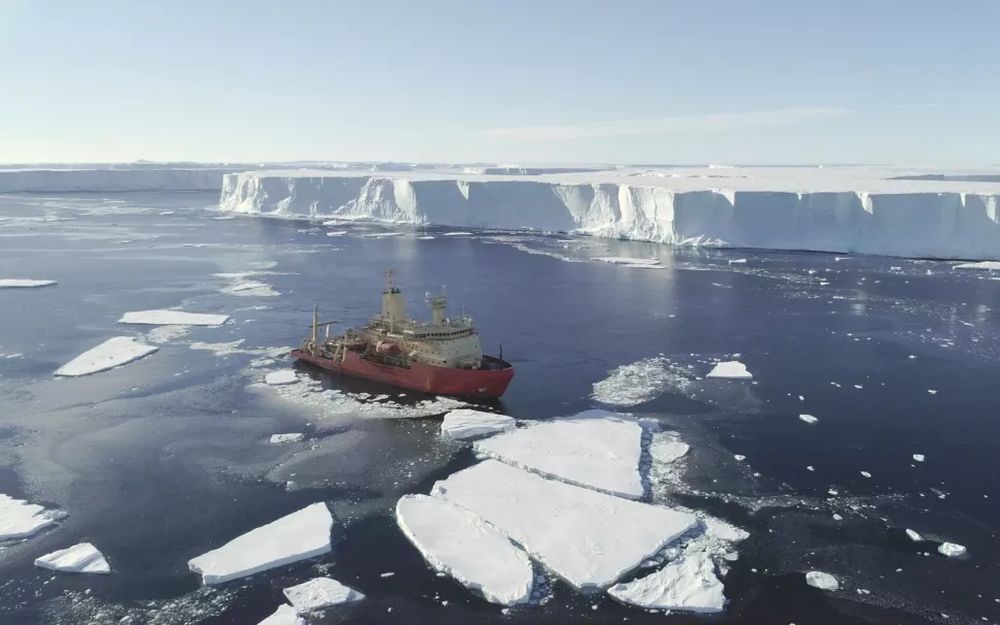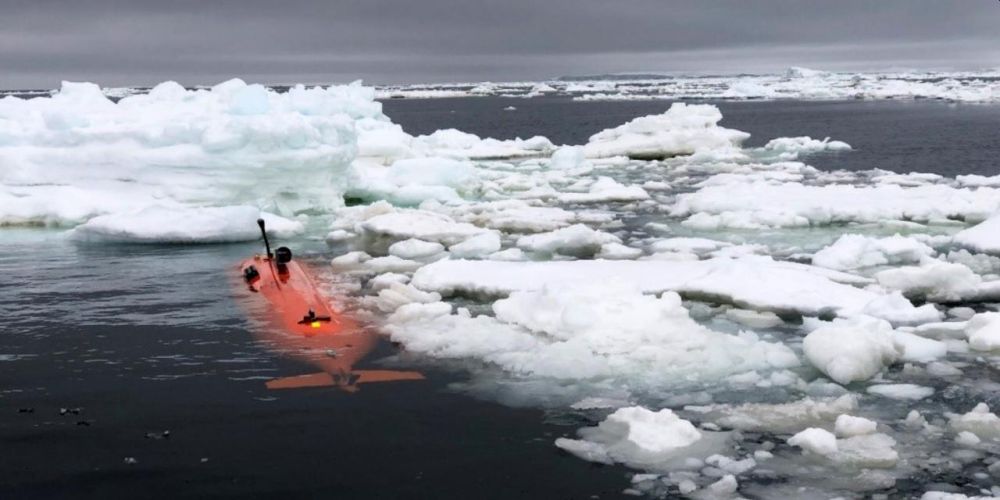‘Doomsday Glacier’ of Antarctica is Melting Faster than Previously Thought
Thwaites Glacier, also known as the Doomsday Glacier, is a gigantic ice shelf in West Antarctica; and like the rest of the globe, it has been tremendously affected by the rapid changes in climate and warming of the planet. A recent study has indicated that the Doomsday Glacier of Antarctica could be melting faster than it was earlier thought.
The glacier had been on the radar of climate scientists for two decades now, but they didn’t know the exact impact of global warming on the glacier. To determine the pace of melting and for a complete collapse, a robotic submarine was sent below the ice shelf.
The submarine returned from surveying the underwater structures of one of Antarctica’s largest glaciers to show that beneath the Thwaites glacier, the water is warming up at a higher and alarming rate than science previously estimated.

Image: Alex Mazur/British Antarctic Survey
The first measurements ever performed in the dark waters under the 74,000 square mile piece of ice discovered that the current of warm water is flowing from the east, cutting away at several crucial pinning points that anchor the shelf to the land.
As the planet warms up, glaciers all over Antarctica are melting rapidly, which threatens the existence of the entire planet and all of its inhabitants.
Glaciers are an essential geological feature of the planet and the largest reservoir storing 69 percent of global freshwater. Scientists often study the pristine cold parts of the globe such as Antarctica and Greenland to assess the impact of global warming on these regions. The melting of these glaciers provides vital information about the extent of warming of the earth.
Published in Science Advances, the recent study shows concern that this flow of warm water underneath Thwaites could result in large-scale glacier melting and sea-level rise. It presents the first-ever direct observations of what is happening under the infamous ice shelf, including the temperature, salinity of the water that is flowing under, and the power of the current.
The new study bases its findings on field observations from 2019 when a team of two dozen scientists sent an autonomous submarine named Ran down underneath Thwaites. The underwater vehicle traveled for 13 hours around the two deep trenches beneath the glacier which funnel warm water toward it.
The vehicle collected data revealing that warm water at up to 33.89 degrees Fahrenheit is swirling around the glacier’s important anchor points that hold the glacier in place on the land. This warm water is melting away these crucial joints, creating more cracks and trenches in the ice that can make the shelf all the more unstable.
According to Alastair Graham, associate professor of geological oceanography at the University of Southern Florida and study co-author,
The worry is that this water is coming into direct contact with the underside of the ice shelf at the point where the ice tongue and shallow seafloor meet. This is the last stronghold for Thwaites and once it unpins from the sea bed at its very front, there is nothing else for the ice shelf to hold onto.
The detection of warm water approves previous concerns from a separate project, wherein a group of 100 scientists drilled a hole of about 2,000 feet into the glacier to monitor the water movement below the glacier’s surface.

Image: Filip Stedt
The submarine moved around one of the trenches, it captured data showing low-salinity water in the area 3,444 feet below the ice shelf, which matched that of the neighboring Pine Island Bay. Scientists have earlier assumed that this part of the glacier was protected from the bay’s currents by a thick underwater ridge, but the findings reveal that it is flowing through the trough freely.
According to the study authors, it is not just Pine Island Bay’s encroaching warm waters that are impacting Doomsday Glacier of Antarctica, but the other warm water currents surging in from along the continental shelf are also contributing to ice melts.
The study presents alarming results, especially for those living along the coasts. Thwaites Glacier’s complete collapse would increase the sea level by 1.5 to 3 feet, and could also trigger an even worse chain of events as it could cause the downfall of another nearby endangered ice shelf, the Pine Island Glacier. Together, these shelves could push sea level up to 10 feet, overwhelming coastal cities around the world.
Over the past four decades, satellite data has shown more rapid water flow into the ocean from the glacier. Meanwhile, the collapsing snowfall patterns are not replenishing the loss at an expected rate. While the recovered data has helped to understand the effect of climate change on the glacier, there is still not enough data to determine how quickly the glacier is moving toward its end.
Graham also added,
We might (and I stress might) have already reached and passed a point where there is really no turning back for Thwaites, no matter what we as humans do to our climate. There may be physical mechanisms that we are yet to uncover that could help Thwaites stabilize and ‘doomsday’ may never come.
The study exemplifies the importance of climate adaptation measures, together with considering the potential benefits of having communities move away from coasts. As there is no certain way to predict the fate of the glacier, it would be wise to take some defensive cautions.


